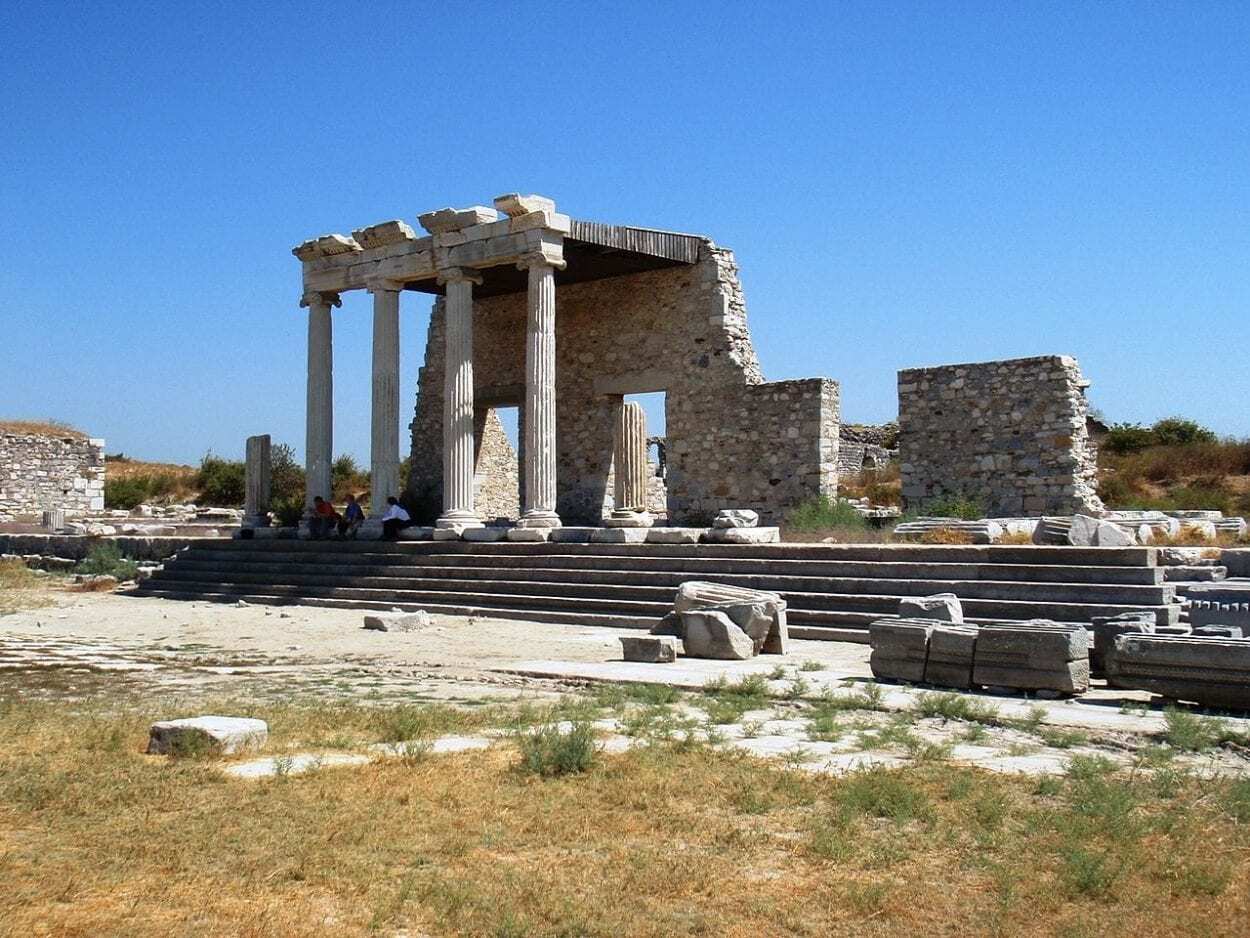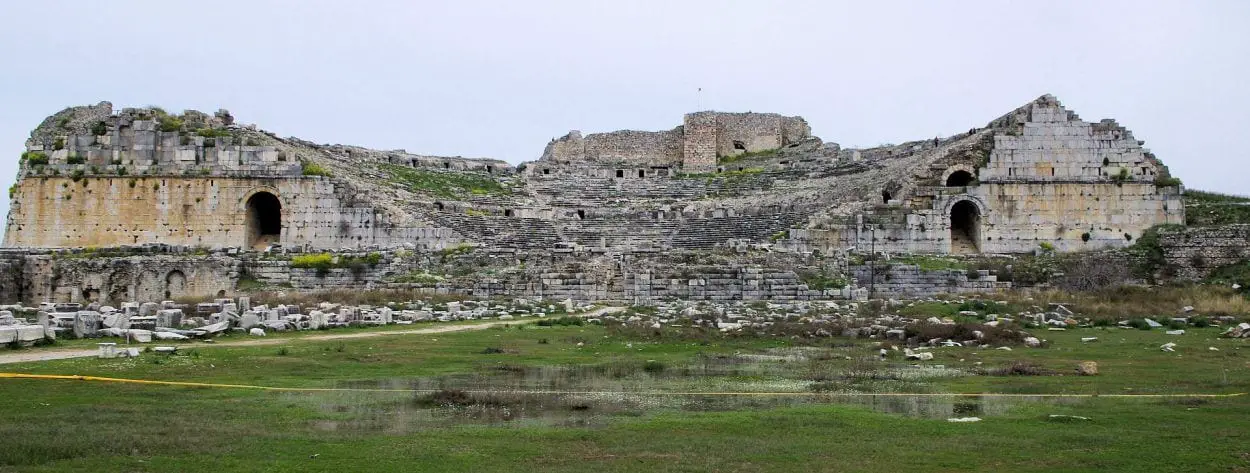Miletus is an ancient Greek city, located in western Anatolia, near the mouth of the Maeander River in the Aydın Province of present-day Turkey.
The earliest evidence of occupation dates from the Neolithic period, where small settlements first inhabited the region from around 3500-3000 BC.
By the Bronze Age, a centralised city had emerged that was influenced through maritime trade with the Minoan civilisation (as indicated by Minoan pottery discovered in situ).
The city continued to flourish as a Mycenaean stronghold, but conflicts with the Hittites led to the city being conquered by the Hittite king Mursili II (based on contemporary accounts in the Milawata letter, although the city may have remained in Mycenaean rule).

The Late Bronze Age and Early Iron Age saw a period of great instability, where civilisations across the Near East, Aegean, Anatolia, North Africa, the Caucasus, the Balkans, and the Eastern Mediterranean collapsed and vanished off the map.
Historians believe the period was violent and culturally disruptive, marking the end of the Hittite Empire, the Mycenaean kingdoms, the Kassites, the Ugarit, the Amorite states, and the disintegration of the palace economy of the Aegean. Miletus appears to have been destroyed around this time by fire, with some historians crediting the city’s destruction to the Sea People (a proposed seafaring confederation).
By the Archaic period, Miletus had risen again to become one of the 12 confederation city-states in the Ionian League (also called the Panionic League) and a maritime empire that established several colonies. The city was also a centre of science and philosophy, with many notable figures such as Thales, Leucippus, Anaximander, Hippodamus, and Anaximene being born within the city walls.
In 387 BC the Peace of Antalcidas (a peace treaty guaranteed by Artaxerxes II that ended the Corinthian War in ancient Greece) gave the Persian Achaemenid Empire control of the Greek city-states of Ionia, including Miletus. The Persians ruled for only a few decades, when a Macedonian force led by Alexander the Great conquered the city in 334 BC.

Most surviving monuments within the city date from the Roman and Byzantine period, where the city became a major centre for the provincial cult, and benefited from various public buildings and new city walls.
The New Testament even mentions Miletus during this period, as the site where the Apostle Paul met the elders of the church of Ephesus near the close of his Third Missionary Journey in AD 57, as recorded in Acts of the Apostles (Acts 20:15–38).
By the 14th century, the Seljuk Turks conquered the city from the Byzantines and used Miletus as a trading hub with Venice. The harbour silted up during the 15th century, essentially cutting the city’s connection with the maritime world that led to Miletus eventually being abandoned.
Header Image Credit : Ken and Nyetta – CC BY 2.0





